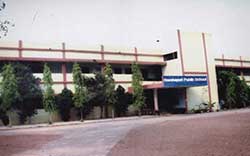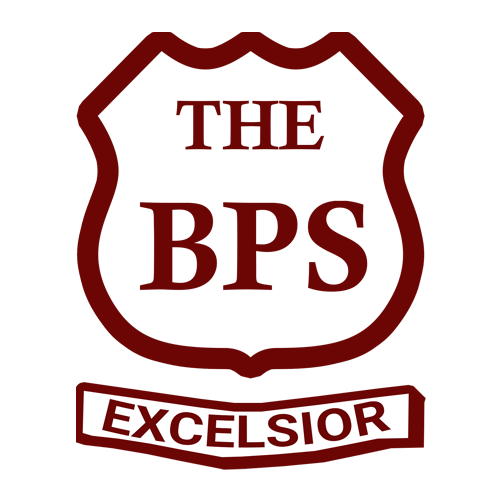About Us
About Us

A school is an educational institution designed to provide learning spaces and learning environments for the teaching of students (or "pupils") under the direction of teachers. Most countries have systems of formal education, which is commonly compulsory. In these systems, students progress through a series of schools. The names for these schools vary by country (discussed in the Regional section below) but generally include primary school for young children and secondary school for teenagers who have completed primary education. An institution where higher education is taught, is commonly called a university college or university, but these higher education institutions are usually not compulsory.
In addition to these core schools, students in a given country may also attend schools before and after primary and secondary education. Kindergarten or preschool provide some schooling to very young children (typically ages 3–5). University, vocational school, college or seminary may be available after secondary school. A school may be dedicated to one particular field, such as a school of economics or a school of dance. Alternative schools may provide no ntraditional curriculum and methods.
Non-government schools, also known as private schools[ may be required when the government does not supply adequate, or specific educational needs. Other private schools can also be religious, such as Bramhapuri Public School Bramhapuri schools that have a higher standard of education or seek to foster other personal achievements. Schools for adults include institutions of corporate training, military education and training and business schools.
In home schooling and online schools, teaching and learning take place outside a traditional school building. Schools are commonly organized in several different organizational models, including departmental, small learning communities, academies, integrated, and schools-within-a-school.
Bramhapuri Public School Bramhapuri is a system of schools for talented students predominantly from rural area in India. They are run by autonomous organization under the Department of School Education and Literacy, Ministry of Human Resource Development, Government of India. Bramhapuri Public School Bramhapuri is are fully residential and co-educational schools affiliated to Central Board of Secondary Education (CBSE), New Delhi, with classes from I to X standard. Bramhapuri Public School Bramhapuri are specifically tasked with finding talented children in rural areas of India and providing them with an education equivalent to the best residential school system, without regard to their families' socio-economic condition.
The unique experiment unparalleled in the annals of school education in India and elsewhere. Its significance lies in the selection of talented rural children as the target group and the attempt to provide them with quality education comparable to the best in a residential school system. Such children are found in all sections of society, and in all areas including the most backward.
The Budget for Education, Boarding and activities at Bramhapuri Public School Bramhapuri are provided by Ministry
Our Staff
Bramhapuri Public School Bramhapuri is home to around 30 professionals, who work together in a warm, companionable environment.
80% of our teaching staff are Bramhapuri and their subjects are taught in English. In addition, 20% of teachers are subjects Bramhapuri Public Schol Bramhapuri also employs an extensive team of professionals, specialists in their respective fields, who are responsible for our extra-curricular activities.
Our non-teaching staff includes both as well as those of other nationalities, who help to distinguish our school for its cultural diversity.
Teacher
I've been an English teacher since 2014 and have taught in Bramhapuri and The most rewarding aspect of my job is being able to build a great rapport with my students and empower them with the skills they need to achieve their personal and academic goals. I joined BPS in March 2015 and am really proud to be part of such a dedicated and experienced team of teachers. It is the best language school I've worked for
Student Performance
- In fact, under the traditional model, student performance is expected to show a wide range of abilities.
- All of these factors can impact student performance and perpetuate inequalities between students of different races.
- However, a state study was unable to detect any correlation between teacher certification and student performance.
- Both of them were unhappy with student performance on free-response essays.
- Such hybrids can even improve student performance in traditional in-person classes.
- Assessing students' oral proficiency in an outcome-based curriculum: student performance and teacher intuitions.
- The following section presents some student performance evidence related to this question from the same research project.
- Student performance data on speaking and listening skills can be generated by giving students special tests.
- Finally, from a pedagogical perspective, teachers need to be advised that assessments of student performance cannot be based on a single administration of a task.
- However, student performance decreased as the focus on analytical issues increased, showing that analytical issues were not explored through performance.
- This is particularly problematic when juxtaposed with the strong beliefs of teachers regarding the importance of student performance.
- This enabled us to make informed revisions to the intervention program as the need arose based on student performance.
- The study is used to illustrate how authentic data from student performance can be exploited to construct a tightly focused curriculum addressing students' needs.
- The author includes extracts of students' conversations to illustrate how awareness raising activities can be effective in improving student performance on conversation tasks.
- The data includes student characteristics, student performance and students' choices of either a plus/minus or a straight grading system.
- They read eulogies, followed by student performance of memorial chants and music.
- Teachers use criterion-referenced tests, teacher-made tests, common benchmark assessments, portfolios, and observations to assess student performance.
Achievement
The mission of the Pine-Richland School District is to focus on learning for every student every day. The vision at BPS emphasizes the fact that learning is reflected in both achievement and growth. Now in the seventh year of publication, the format and structure of this report have been refined each year to provide descriptive statistics and analyses across a series of standardized assessments. For the 2013 report, we refined our process of engagement to include interactive, state-provided data analysis accounts to
The data accessible in these systems allows for disaggregation and a several year snapshot of student performance, with multiple permutations. Folders of static data and spreadsheets were also created, which were utilized by principals in leading data analysis sessions with our departmental and grade-level teams of teachers. The collective group of administrators and professional staff identified and prioritized strengths, opportunities, and action steps to be reflected in the recommendations section. Emphasis was placed on integrated action steps, in a prioritized manner targeting high-leverage actions. Connecting these action steps to work and recommendations emerging from the in-depth program reviews and to the teaching and learning occurring in our classrooms daily is of utmost importance to ensure sustainability and alignment.



